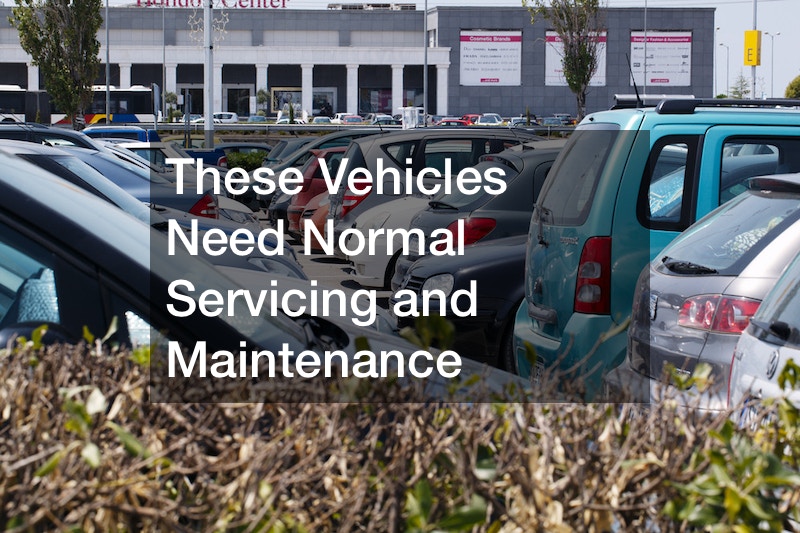
Anyone considering owning a car knows that it also comes with responsibilities. Not just putting in fuel to keep it running but also servicing and maintenance throughout the year to improve its safety and performance. Doing so saves you on repairs and part replacements and increases resale value, among other benefits. Here are some normal servicing and maintenance tasks needed for most vehicles.
1. Key Programming
To avoid major inconvenience and frustrating waiting times, working with experts who understand car key programming issues, including procedural reprogramming techniques, is prudent. A smart key is efficient since it has a built-in transponder that enables the start and stop of your engine without inserting the key. It identifies and syncs with your vehicle security system, like the immobilizer chip, which prevents your car from being stolen, making it reliable. To maintain code quality and readability, regularly have a professional review it to identify issues like bugs and address them promptly.
Remaining updated with the latest software and patches for your car key programming will help you address any security vulnerabilities or performance issues. Another practice that could save you a great deal is keeping all the comprehensive documentation for the car key programming, including installation instructions and troubleshooting guides. These will help you and your developer understand and utilize the programming effectively. Protecting against potential security breaches by conducting security audits and ensuring the integrity of the programming provides a positive user experience.
2. Driveshaft Repair
In your normal vehicle servicing and maintenance, have your driveshaft regularly inspected to prevent your car from an unexpected shutdown. Engage a driveshaft repair service expert who can pinpoint signs of wear and damage in critical areas like the u-joints and carrier bearings. An expert can handle details like angular and vibration measurements and do professional lubrication as specified by the manufacturer using quality grease, as low-quality grease can cause failure. Assessing the driveshaft is a multi-step process; mere visual inspection may not be enough.
Driveshaft repair is often due when you start experiencing squeaking, unpleasant noises, or vibrations from underneath your car and when you have trouble turning and difficulty controlling your vehicle, which can be a safety hazard. Foreign objects and dirt can enter the driveshaft and cause damage, especially if the joints are broken. Therefore, maintaining your driveshaft will require regular cleaning and even covering it if you live or drive on dusty roads. Have a qualified mechanic do the repairs, as poor work on the driveshaft can cause it to wear out and bind, causing issues with performance.
3. Detailing
Your car doesn’t only need mechanical servicing and maintenance to be in the best possible condition. It also needs cosmetic maintenance for both the interior and exterior appearance. This includes polishing the exterior, restoring it to its blemish-free finish, and adding protection like wax and other products to maintain its condition. You can also have detailing done, which entails removing the visible and invisible contaminants from your car’s interior using vacuuming, shampooing, and leather conditioning. It may also include engine bay cleaning and shampoo.
Mechanical issues can occur without regular detailing due to corrosion and rust of parts of your car, like the engine and tire rims, and from dust on the engine that may raise the temperature. Detailing maintains your car’s quality, finish, and overall resale value by preventing dirt and grime build-up or annoying infestations. Detailing doesn’t just make your car look great.
It maintains its proper functioning and lengthens its lifespan. Regularly taking your car to an auto detailing company will increase your vehicle’s ability to bear various terrains and conditions and make it safe to drive. They can also catch potential problems early and curb them before escalating, thus saving you costs in the long run.
4. Golf Cart
A feature in golf carts enables you to switch to normal when using the cart and one marked for tow, storage, and maintenance when not in use. Be sure to flip it to the latter switch mode when not in use to prevent the batteries from draining down. For longer-term storage, besides flipping the switch to storage mode, you’ll need to remove your cables from the main positive and negative locations of your battery pack for winter storage purposes. Turn off the fuel shut-off valve on the fuel tank for a gasoline-powered cart.
When operating a golf cart, avoid sudden starts, stops, and abrupt turns, as these could cause damage to the cart. Improperly charged batteries can lessen your golf cart’s life span and effective performance, so try to ensure that batteries are fully charged before heading out. Before charging, however, keep flames and sparks away from your vehicle, and don’t smoke while charging since lead acid batteries contain explosive gases that can cause severe burns.
Ensure you wear protective clothing, rubber gloves, safety glasses, and a face shield. Only add distilled water to the proper level when the batteries are fully charged. Avoid overfilling because too much can be harmful, like not enough water. Some golf cart maintenance practices like fueling precautions, detailing, and cleaning are similar to your automobile.
5. Wraps
A vinyl car wrap protects the paint from fading and adds a touch of personalization. However, it has stricter rules around its upkeep, like not exposing it to freezing conditions or sitting it in the sun for too long as the glue will harden and cause wear. You must also ensure pollutants like bird droppings or even mud are cleaned out immediately to prevent stains, and they’re more prone to swirls and scratches than paint.
It’s thus important to use a wrap-specific sealant to curb all that. Keep your car wrap clean by hand washing it with a soft sponge and a non-abrasive detergent, and if you have to pressure wash it, ensure you adhere to the manufacturer’s guidelines, like using low-pressure water spray without the brush. Servicing and maintenance of your car wrap maintains its visual appeal.
6. Trailers
Servicing and maintenance of a trailer entails greasing the wheel hub, checking their adjustment, and checking the draw tube for wear and tear by ensuring there’s no severe up and down or side-to-side movement within the actual coupling itself. Check to ensure the grease nipples are in good condition and still there. Apply grease with a grease gun to the coupling, often two to three squirts on each grease nipple. You should be able to tell when it’s full because the pressure will drop.
Check the brake linkage mechanism by getting hold of the brake rod and giving it a tug towards the back. If there’s no movement, things are adjusted correctly, but if things move, tighten the ball nut behind it until the slack is gone, and everything will be secure again. This should make the hand brake lever reach ”10 o’clock” on a clock face. If it hardly lifts, then you’ve over-adjusted the brakes, and you’ll have to adjust until there’s some allowance for movement within the system.
Routine servicing for your freezer trailer is crucial. You can do simple maintenance tasks like cleaning, staying fully fueled up, complying with guidelines for loading goods, and monitoring temperature. Lack of maintenance will cause damage, spoil your temperature-sensitive products through flavor loss, and worse bacteria growth.
7. RVs
The best way to keep your RV out of the shop and make the most out of it is by keeping up with its servicing and maintenance. Your slide-out seals need a preservative, not lubrication. Apply a conditioner that has a UV blocker to protect them from sunlight damage and keep them soft. Ensure you have a flying insects screen on your propane-burning appliances to prevent them from building inside your furnace. It’s easier to clean an insect nest outside your camper.
The RV roof needs to be patched with a proper RV roof patch. Don’t leave the setting at night on cold for the AC since it’ll freeze up the coil inside and won’t cool your RV effectively. To prevent this, turn the thermostat from the coldest to the warm setting until the compressor clicks off. Doing this will cycle the compressor on and off and avoid freezing at night.
Remember to keep your black tank valve closed unless you’re actively dumping so the pipes don’t get filled with water. You may be excited to find a recreational vehicle sale offering unbelievably good deals. However, it’s important to note that the RV manufacturing industry isn’t regulated like automobile manufacturing. With RVs, any component not part of the motor vehicle, like the slide rooms or RV appliances, often presents quality control issues. A clever tip is to take your RV out for camping immediately after you get it, figure out all its issues, and take advantage of the manufacturing warranty to fix all the issues for free.
8. Vehicle Recycling
Cars still have value even at the end of their useful life as a source of spare parts. Functioning parts that can be reused are salvaged and sold, reducing the need for new manufacturing, thus conserving energy and reducing greenhouse gas emissions associated with manufacturing. The remaining parts are processed and transformed into raw materials used in producing new products during metal recycling.
Vehicle recycling may not directly relate to your vehicle’s normal servicing and maintenance. However, it’s essential for responsible vehicle management and sustainability as it helps reduce waste, conserve resources, and minimize environmental impact. This is achieved by properly removing and disposing of hazardous materials such as batteries or engine fluids according to environmental regulations.
9. Industrial
Industrial vehicles are all types of heavy machinery used in construction, manufacturing, logistics, and agriculture. They include graders, tractors, forklifts, bulldozers, and excavators, requiring special training in driving and operating them. Manufacturer’s recommended engine oil and filter changes should be adhered to, as well as other fluids such as coolant, transmission, and brake fluid, to maintain optimal performance.
You should also never skip routine inspections for leaks, tire rotations, and maintenance of brake and electrical systems, including batteries, wiring, and safety lights. A vital aspect of servicing and maintenance of industrial vehicles is thorough and periodic cleaning of the vehicle’s exterior since they operate in harsh environments, accumulating dirt, dust, and debris. Lubrication of moving parts helps prevent corrosion, rust, and possible mechanical failures. Ensure that every vehicle’s specific and unique parts are catered to. For instance, if you own forklifts, ascertain that the tynes and backrest aren’t fractured and check the lift, tilt control, and side shift if fitted.
10. Cranes
Most imports and exports come through the port. They typically come in shipping containers, which are pretty heavy and necessitate the use of cranes. Nothing will run if this equipment doesn’t. Preventative and regular servicing and maintenance from a professional crane service is essential to preventing breakdowns and reducing the risk of accidents. This typically involves regular inspections to identify any signs of wear and tear, damage, or malfunctioning components on equipment like the spreader responsible for moving cargo and systems that control the operator’s box and the arm, also known as the boom.
Follow the manufacturer’s recommendations for lubrication intervals to ensure smooth operation and prevent excessive friction that causes wear. A crane can have nearly a hundred operating systems on the down and high-up parts. Ensure that crane operators and maintenance personnel are certified and always on ongoing and adequate training to keep them up to speed with the latest safety practices and regulations. Remember, maintaining detailed records of all maintenance activities, inspections, repairs, and certifications will not only serve as evidence of compliance with safety regulations. It can also help identify recurring problems or patterns of malfunction.
Have you ever met someone with an old car model but it looks and performs better than newer models, and you wonder, ”What’s their secret?” Regular inspections, repairs, and upkeep are necessary to ensure your vehicle’s optimal performance and safety, which should always be the top priority and greatest motivation to stay on top of your vehicle’s needs. Follow the manufacturer’s guidelines and consult only qualified technicians for servicing and maintenance requirements for your vehicle. When you take good care of your ride, it’ll take care of you back. You can use this read as a guide for tips to get you started.








